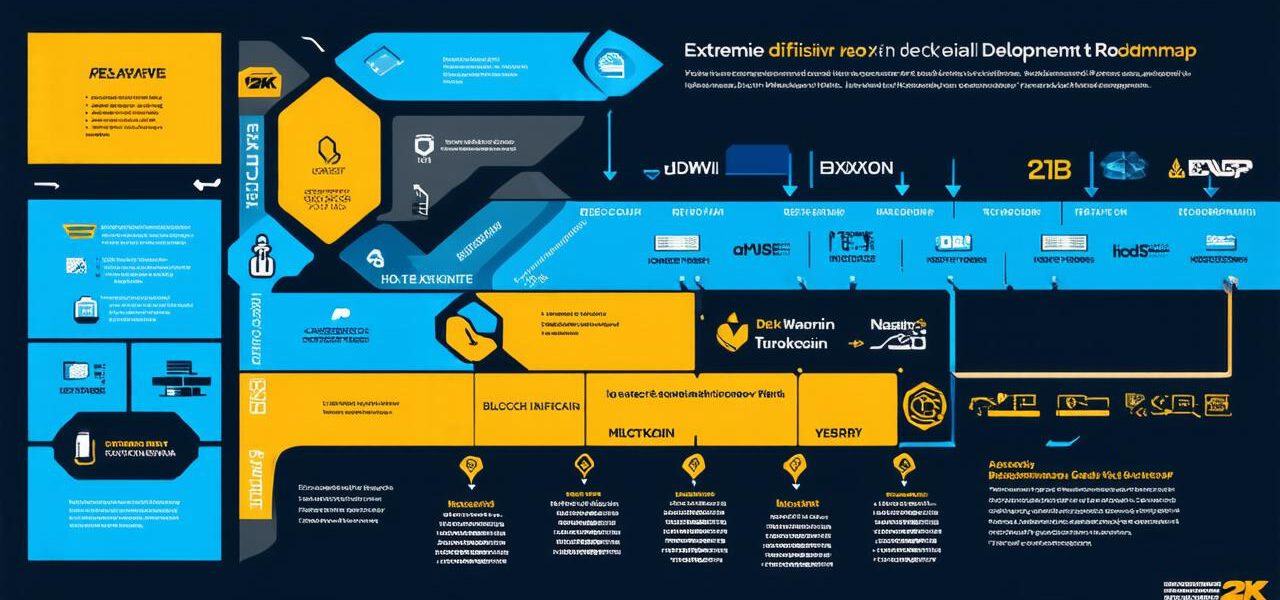
Creating a comprehensive roadmap for blockchain development
Blockchain technology is gaining popularity in various industries, and more and more businesses are looking to implement it. However, developing a blockchain solution can be complex, requiring specialized knowledge and expertise. In this article, we will provide a comprehensive roadmap for blockchain development that will help you create a successful blockchain solution.
Understanding the Requirements
The first step in creating a blockchain solution is to understand the requirements of your business. This includes understanding the type of data you want to store on the blockchain, the rules and regulations governing the data, and the use cases for the blockchain solution. It is essential to have a clear understanding of these requirements before proceeding with the development process.
Choosing the Right Blockchain Platform
There are various blockchain platforms available, such as Ethereum, Hyperledger, and Corda. Each platform has its strengths and weaknesses, and it is essential to choose the right one for your business needs. For example, if you need a private blockchain network, Hyperledger may be the best choice. On the other hand, if you need a public blockchain network, Ethereum may be the better option.
Designing the Blockchain Architecture
Once you have chosen the right blockchain platform, the next step is to design the architecture of your blockchain solution. This includes determining the type of consensus mechanism to use, the data structure and storage methods, and the smart contract programming language. It is essential to choose a scalable and efficient architecture that can handle high transaction volumes and complex business logic.
Developing Smart Contracts
Smart contracts are self-executing programs that run on the blockchain network. They enable businesses to automate various processes and reduce the need for intermediaries. Developing smart contracts requires specialized knowledge and expertise, and it is essential to follow best practices such as using modular design, thorough testing, and error handling.
Integrating with Existing Systems
Once your blockchain solution is ready, the next step is to integrate it with existing systems. This includes integrating with legacy systems, APIs, and other third-party applications. It is essential to ensure a seamless integration that does not disrupt existing business processes.
Testing and Deployment
Testing is a crucial stage in the development process, as it helps identify and fix bugs and security vulnerabilities. Once testing is complete, the next step is to deploy the blockchain solution to the production environment. This includes setting up the infrastructure, configuring the network, and ensuring data migration.
Case Study: Supply Chain Management using Blockchain
A real-life example of blockchain development is supply chain management. A company can use blockchain technology to create a transparent and tamper-proof system for tracking products from the manufacturer to the end consumer. This includes storing product information on the blockchain, enabling businesses to track the movement of goods in real-time, and reducing fraud and counterfeiting.
FAQs:
1. What are the benefits of using blockchain technology in supply chain management?
* Increased transparency and traceability of products
* Reduced fraud and counterfeiting
* Improved efficiency and cost savings
2. How do I choose the right blockchain platform for my business needs?
* Consider the type of data you want to store on the blockchain, the rules and regulations governing the data, and the use cases for the blockchain solution.
3. What are the best practices for developing smart contracts?
* Use modular design
* Thorough testing
* Error handling
4. How do I integrate my blockchain solution with existing systems?
* Ensure a seamless integration that does not disrupt existing business processes.
5. What are the key stages of blockchain development?
* Understanding the requirements
* Choosing the right blockchain platform
* Designing the blockchain architecture
* Developing smart contracts
* Integrating with existing systems
* Testing and deployment
Summary:
Blockchain technology is revolutionizing various industries by enabling businesses to create secure, transparent, and efficient systems. Creating a comprehensive roadmap for blockchain development can help you achieve success by ensuring that you have a clear understanding of your business requirements, choose the right blockchain platform, design an efficient architecture, develop smart contracts, integrate with existing systems, and test and deploy the solution effectively.



